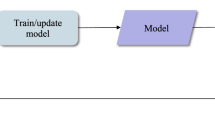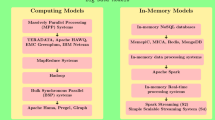Abstract
Acquisitional issues widely exist in GPS and sensor networks. They pertain to where, when, and how often data is physically acquired (sampled) and delivered to some query processing systems. Due to the dynamic environment that the data is acquired with the change of monitoring time, acquisitional data are typically a time-stamped stream where a time-stamped value could either contain noises or be missing. Aiming to improve the quality of data acquisition, we focus on the explanations of missing values in this paper. Several techniques have been developed to provide the explanation on relational data, however, they cannot be directly applied in acquisitional stream data due to its dynamic feature, such as the “change” of acquisitional stream data between two adjacent monitoring time is often constrained by some rules. We show that an explanation could be incorrect or unreasonable if those constraints are not taken into account. We propose one novel chasing technique by considering both spatial and temporal correlations to explain missing values and guarantee a minimal explanation. Experimental results show that our approach can efficiently return high-quality and minimal explanations of missing values.
















Similar content being viewed by others
References
AMeliou, A., Gatterbauer, W., Moore, K., Suciu, D.: Why So? Or Why No? Functional causality for explaining query answers. In: MUD, pp. 3–7 (2010)
Arenas, M., Bertossi, L., Chomicki, J.: Consistent query answers in inconsistent databases. In: TPLP, pp. 68–79 (2003)
Bhowmick, S., Sun, A., Truong, B.: Why Not, Wine?: Towards answering why-not questions in social image search. In: MM, pp. 917–926 (2013)
Bidoit, N., Herschel, M., Tzomapanaki, K.: Query-Based Why-Not Provenance with Nedexplain. In: EDBT, pp. 145–156 (2014)
Chapman, A., Jagadish, H.: Why Not? In: VLDB, pp. 523–534 (2009)
Chen, L., Lin, X., Hu, H., Jensen, C., Xu, J.: Answering why-not questions on spatial keyword top-K queries. In: ICDE, pp. 279–290 (2015)
Gao, Y., Liu, Q., Chen, G., Z.B.Z.L.: Answering why-not questions on reverse top-K queries. VLDB, pp. 738–749 (2015)
He, Z., Lo, E.: Answering why-not questions on top-K queries. In: ICDE, pp. 750–761 (2012)
Herschel, M.: Wondering why data are missing from query results?: Ask Conseil Why-Not. In: CIKM, pp. 2213–2218 (2013)
Herschel, M., Hernandez, M.: Explaining missing answers to Spjua queries. In: VLDB, pp. 185–196 (2010)
Herschel, M., Hernandez, M., Tan, W.: Artemis: a system for analyzing missing answers. In: VLDB, pp. 1550–1553 (2009)
Huang, J., Chen, T., Doan, A., Naughton, J.: On the provenance of non-answers to queries over extracted data. In: PVLDB, pp. 736–747 (2008)
Islam, M., Liu, C., Li, J.: Efficient answering of why-not questions in similar graph matching. IEEE Trans. Knowl. Data Eng 27, 2672–2686 (2015)
Islam, M., Zhou, R., Liu, C.: On answering why-not questions in reverse skyline queries. In: ICDE, pp. 973–984 (2013)
Jeffery, S., Garofalakis, R., Franklin, M.: Adaptive cleaning for Rfid data streams. In: VLDB, pp. 163–174 (2006)
Li, X., Dong, X., Lyons, K., Meng, W., Srivastava, D.: Truth finding on the deep Web: is the problem solved. In: VLDB, pp. 97–108 (2012)
Roy, S., Suciu, D.: A formal approach to finding explanations for database queries. In: SIGMOD, pp. 1579–1590 (2014)
Song, S., Zhang, A., Wang, J., Yu, P.: Screen: stream data cleaning under speed constraints. In: SIGMOD, pp. 827–841 (2015)
Tran, Q., Chan, C.: How to conquer why-not questions. In: SIGMOD, pp. 15–26 (2010)
Zong, C., Sun, J., Wang, B., Yang, X.: Minimizing explanations of why-not questions. In: DASFAA Workshop, Pp. 230–242 (2014)
Zong, C., Yang, X., Wang, B., Zhang, J.: Minimizing explanations for missing answers to queries on database. In: DASFAA, pp. 254–268 (2013)
Acknowledgments
This work is partially supported by the NSF of China for Outstanding Young Scholars under grant No. 61322208, the NSF of China under grant No. 61572122, the NSF of China for Key Program under grant No. 61532021, and the NSF of China under grant No. 61272178.
Author information
Authors and Affiliations
Corresponding author
Rights and permissions
About this article
Cite this article
Zong, C., Yang, X., Wang, B. et al. Minimal explanations of missing values by chasing acquisitional data. World Wide Web 20, 1333–1362 (2017). https://doi.org/10.1007/s11280-017-0438-0
Received:
Revised:
Accepted:
Published:
Issue Date:
DOI: https://doi.org/10.1007/s11280-017-0438-0




